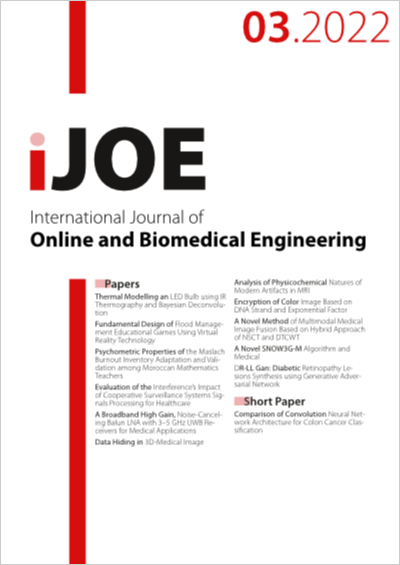Thermal Modelling an LED Bulb using IR Thermography and Bayesian Deconvolution
DOI:
https://doi.org/10.3991/ijoe.v18i03.27921Keywords:
LED bulb, thermal modelling, Foster and Cauer networks, Bayesian deconvolution.Abstract
This study focuses on LED bulbs where LEDs are typically mounted on a metal core printed circuit board. A sample of LED bulbs having base E27 and a power range between 3.5-11.5 W have been measured. A thermal model will be found using thermal transient testing, infrared thermal measurements, and the Bayesian deconvolution. LED surface temperature will be measured without contact using a low-resolution IR imager. A test facility has been built which automatically switches power on and measures and records samples during the measurement cycle which typically lasts around one hour. This time duration was long enough for reaching the thermal steady-state condition. The procedure uses a measured thermal transient, first calculates the thermal impedance Zth, then the time constant spectrum Rζ(z) using the Bayesian deconvolution. An equivalent thermal network model will be found in Foster-presentation. This can be transformed to Cauer-presentation. The model is a driving point model for thermal impedance and includes thermal resistances and thermal capacitances. FEM simulation gives more detailed information about heat transfer paths and internal temperatures of an LED bulb.
Downloads
Published
How to Cite
Issue
Section
License
Copyright (c) 2022 Mika Maaspuro

This work is licensed under a Creative Commons Attribution 4.0 International License.



